What Is Pancreatic Cancer?
Pancreatic cancer is a serious disease that begins in the tissues of the pancreas—a small, gland-shaped organ located behind the stomach. Shaped somewhat like a flat hockey stick, the pancreas plays two key roles in the body:
Digestive Function: It produces enzymes that help break down food.
Hormonal Regulation: It releases hormones like insulin and glucagon to regulate blood sugar levels.
How Does Pancreatic Cancer Develop?
Pancreatic cancer occurs when cells in the pancreas begin to grow uncontrollably due to mutations in their DNA. These abnormal cells can cluster together to form tumors. Most commonly, cancer starts in the ducts that carry digestive enzymes out of the pancreas—a condition known as pancreatic ductal adenocarcinoma.
The tumor formed can be:
Benign (non-cancerous): Generally harmless and doesn’t spread.
Malignant (cancerous): Aggressive and capable of invading surrounding tissues or spreading to other parts of the body.
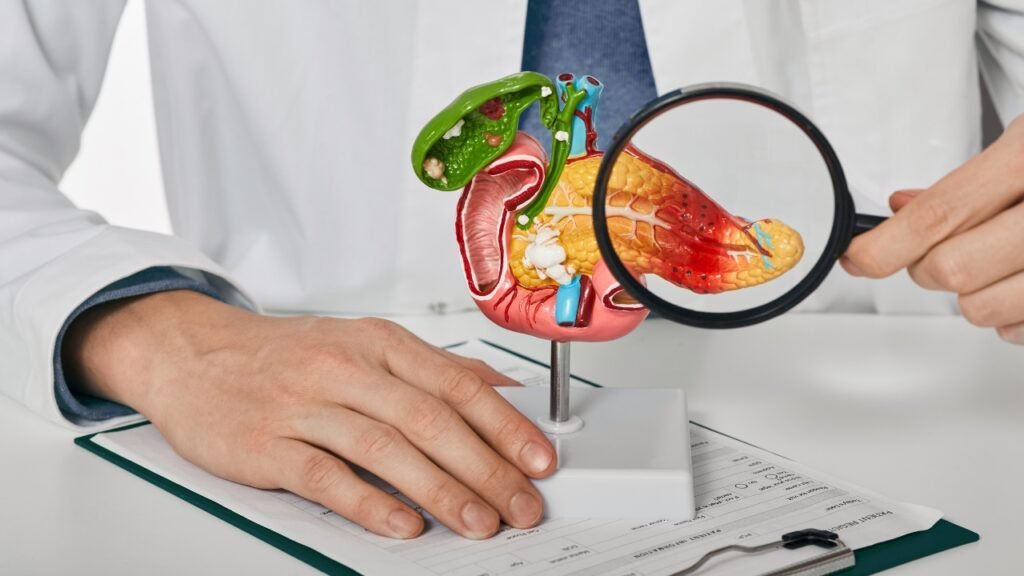
What Causes Pancreatic Cancer?
Pancreatic cancer arises when certain cells in the pancreas begin to grow abnormally and uncontrollably. This uncontrolled growth usually starts due to changes or mutations in the DNA of pancreatic cells, which interfere with the body’s natural cell cycle, allowing tumors to form and potentially spread.
Key Risk Factors and Triggers
While the exact cause of pancreatic cancer isn’t always known, several risk factors are known to increase the likelihood of developing this disease:
- Genetic Mutations and Hereditary Conditions
- Chronic Pancreatitis
- Lifestyle-Related Factors
- Type 2 Diabetes
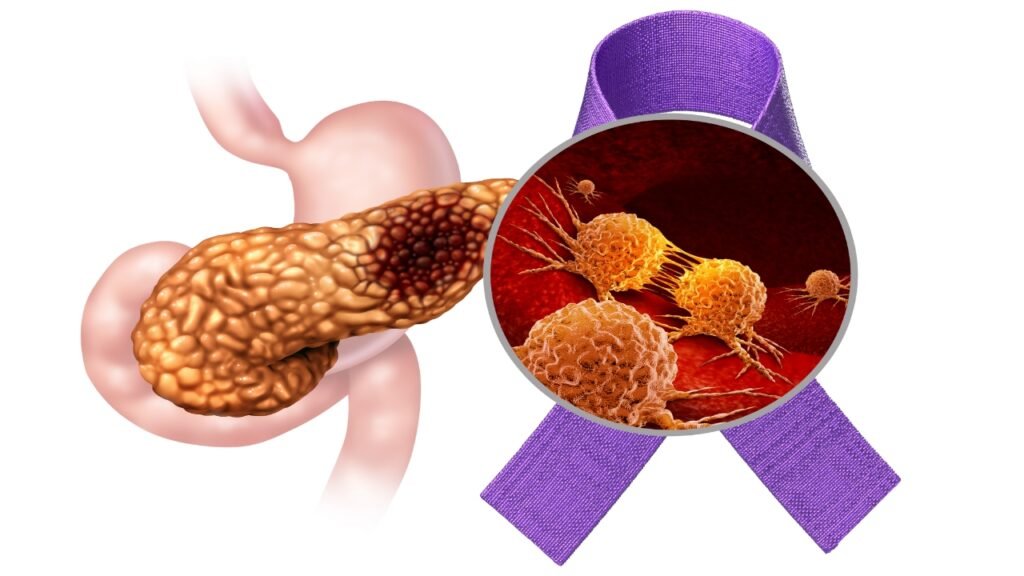
Types of Pancreatic Cancer
Pancreatic cancer can develop in different types of cells within the pancreas. Understanding these cancer types helps in diagnosis, treatment planning, and predicting how aggressive the disease might be. Broadly, pancreatic cancer is categorized into exocrine and neuroendocrine tumors.
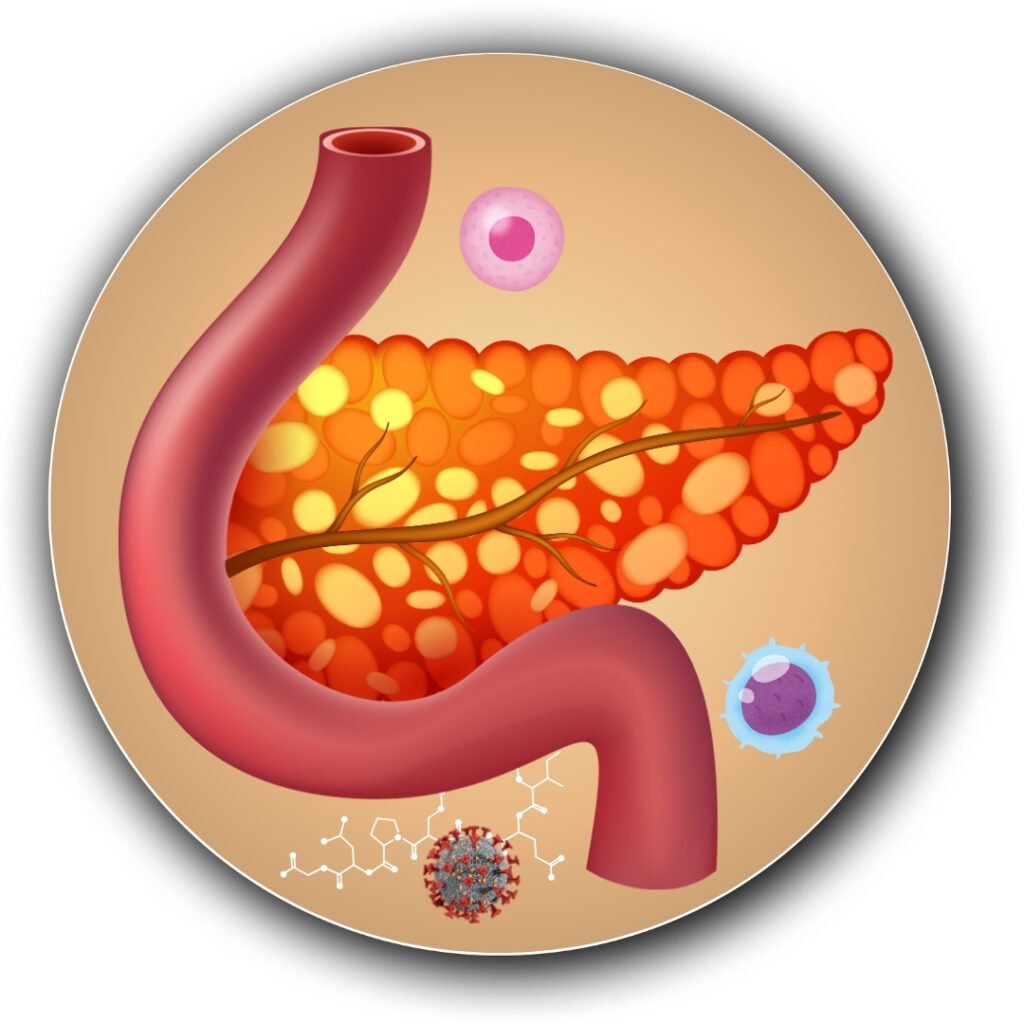
Adenocarcinoma
The most frequently occurring type.
Begins in the ductal cells that line the pancreatic ducts.
In some cases, the cancer cells may also release enzymes; such cases are known as acinar cell carcinomas, which may lead to symptoms like joint pain and skin rashes due to elevated enzyme levels.

Squamous Cell Carcinoma
A rare type, originating from squamous cells found in the pancreatic ducts.
This form is aggressive and typically diagnosed at a later stage.
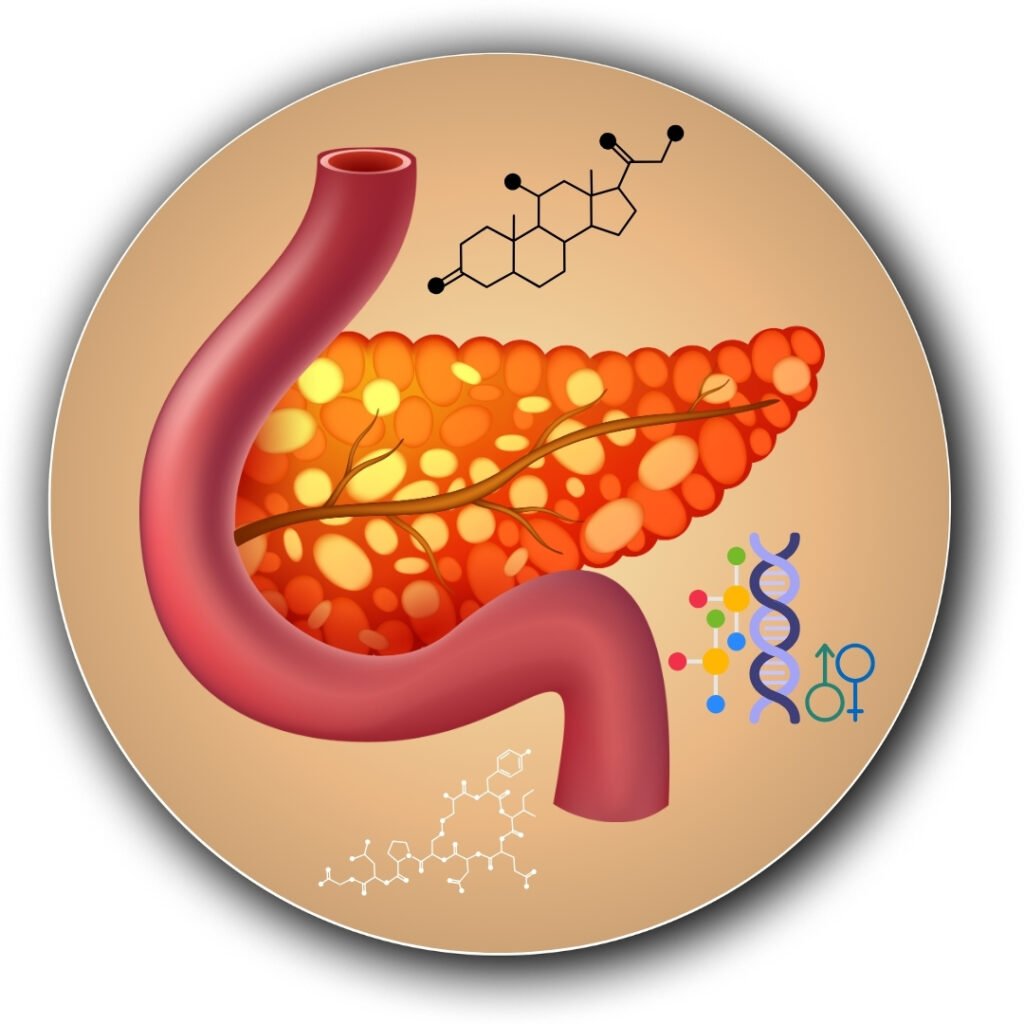
Adenosquamous Carcinoma
A highly aggressive and fast-spreading tumor.
Contains both glandular (adenocarcinoma) and squamous cell features, making it more complex to treat.
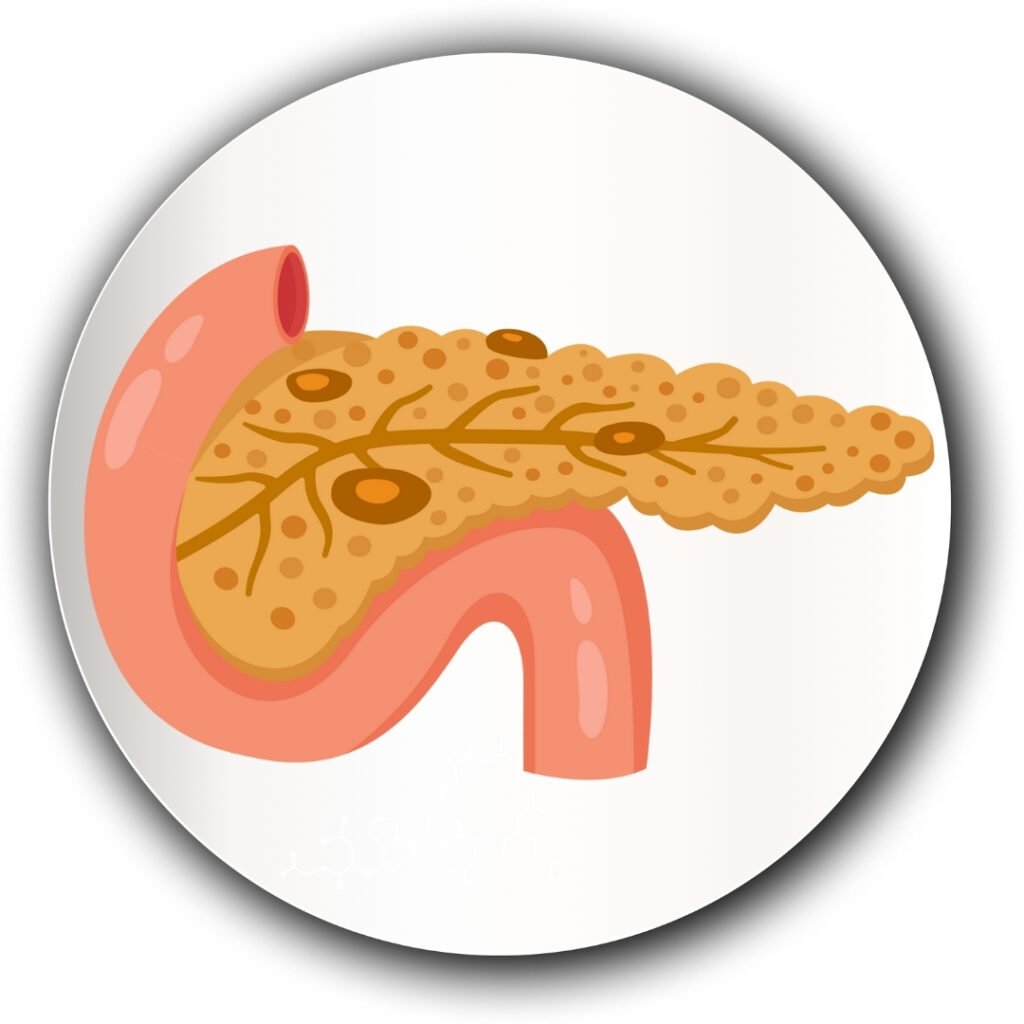
Colloid Carcinoma
A rare subtype, accounting for 1–3% of exocrine pancreatic cancers.
Often develops from benign cysts like intraductal papillary mucinous neoplasms (IPMNs).
The mucin-rich nature of these tumors helps the malignant cells spread through fluids, contributing to their aggressive nature.
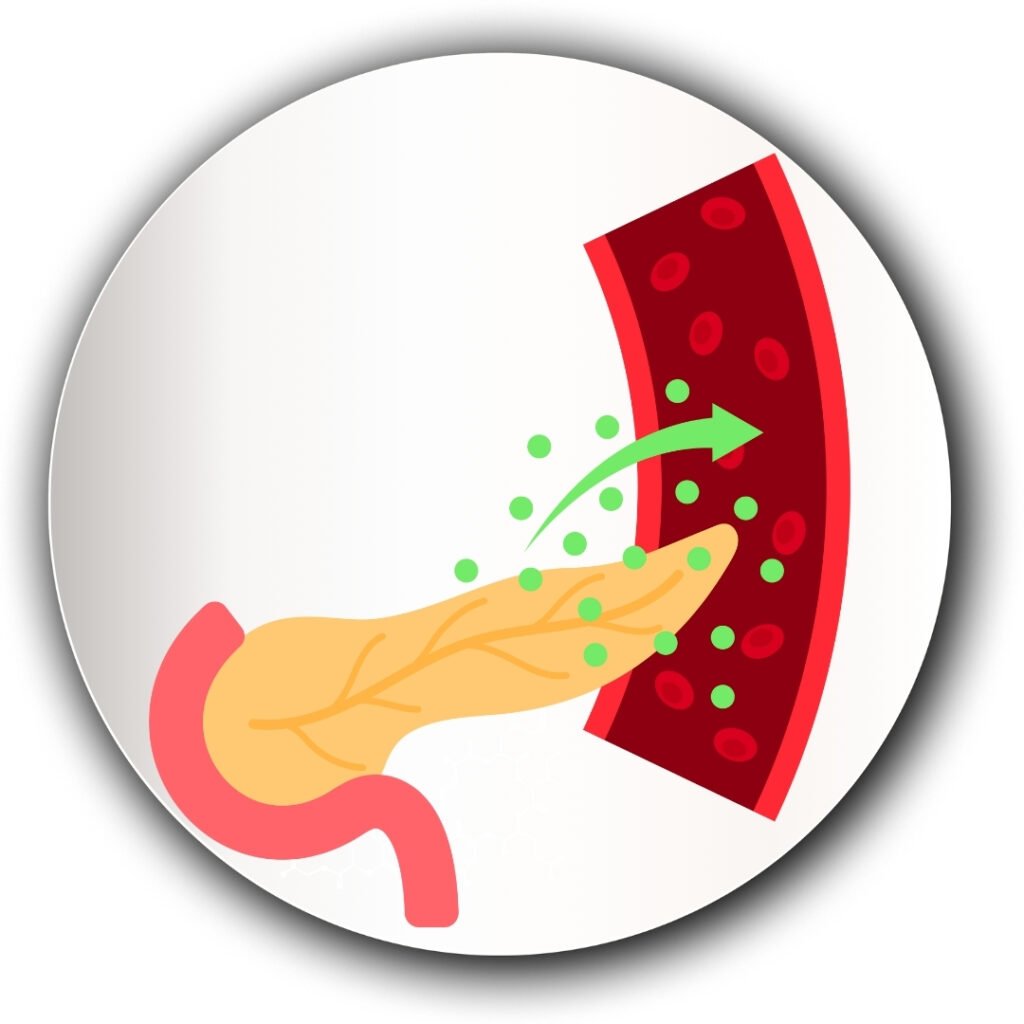
Neuroendocrine Pancreatic Tumors (NETs)
These cancers arise from the endocrine (hormone-producing) cells of the pancreas and are less common than exocrine tumors.
These cells regulate blood sugar levels by producing hormones such as insulin and glucagon.
Also known as islet cell tumors or endocrine pancreatic cancer.
NETs may be functioning (producing excess hormones) or non-functioning (not producing hormones).
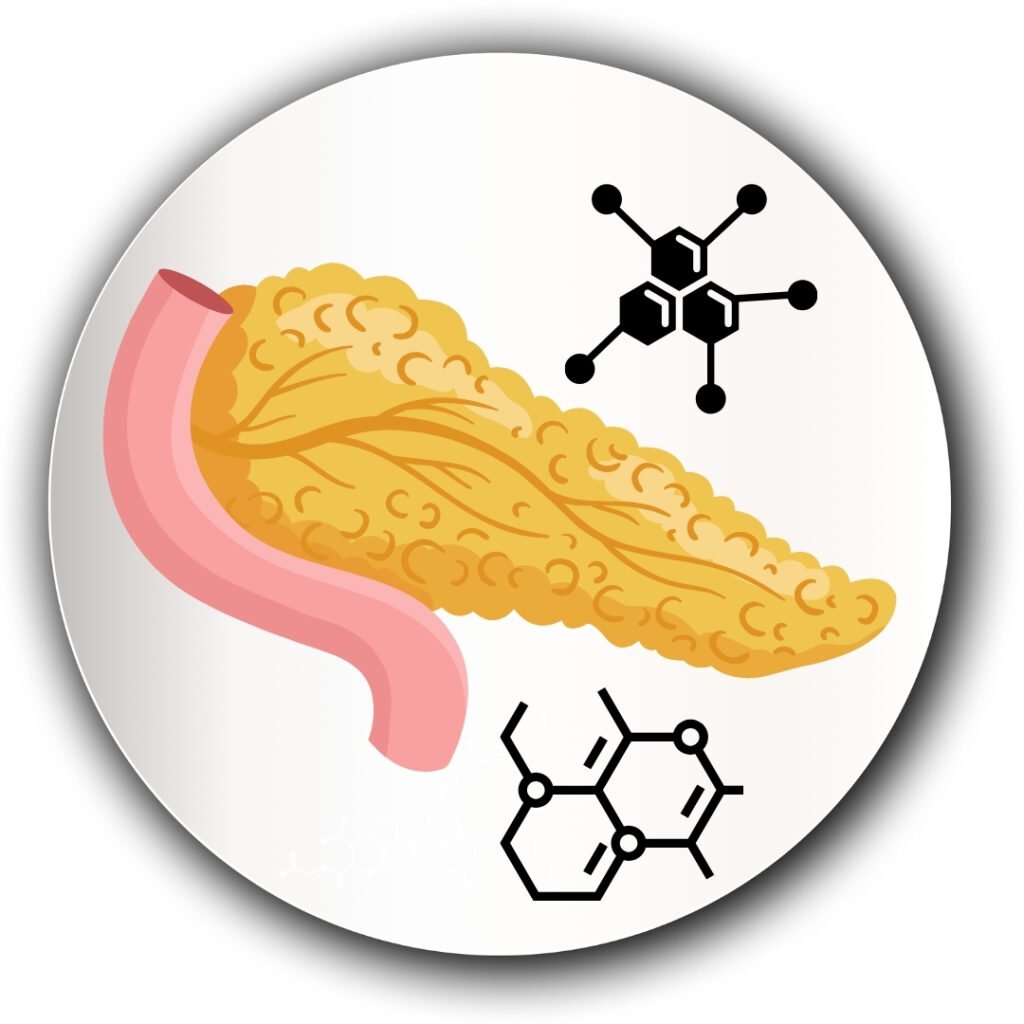
Benign Precancerous Lesions
Certain non-cancerous growths or cysts in the pancreas have the potential to turn malignant over time. Key examples include:
Intraductal Papillary Mucinous Neoplasms (IPMNs): These cysts can evolve into invasive cancer if not monitored or removed.
Regular surveillance and timely medical intervention can reduce the risk of progression.
Signs and Symptoms of Pancreatic Cancer
Pancreatic cancer often develops silently, with few or no symptoms in its early stages. As the disease progresses, however, certain signs may begin to emerge. These symptoms are often vague and may resemble other health conditions, making early detection challenging.
- Abdominal and Back Pain
- Unexplained Weight Loss and Fatigue
- Jaundice (Yellowing of the Skin and Eyes)
- New or Worsening Diabetes
- Blood Clots
A New Approach to Cancer Healing
at Raghavan Cancer Care
At Raghavan Cancer Care, treatment goes beyond just managing cancer — it’s a complete journey toward physical, emotional, and spiritual wellness.

Metabolic Healing
Dr. Raghavan follows a powerful method inspired by Dr. Thomas Seyfried, focusing on the unique way cancer cells use energy. By supporting the body through special approaches like a ketogenic diet, this method offers a fresh direction in cancer care rooted in metabolic understanding.

Mind-Body Balance
Taking inspiration from Dr. Joseph Mercola, our care also emphasizes the deep link between the mind, body, and spirit. At Raghavan Cancer Care, we believe that emotional and spiritual support is just as important as physical treatment in the healing process.

Food as Medicine
Dr. Wallach’s nutritional guidance has shaped our strong focus on diet. We promote clean, nutrient-rich meals and personalized nutrition plans to help strengthen the body and support recovery naturally.
